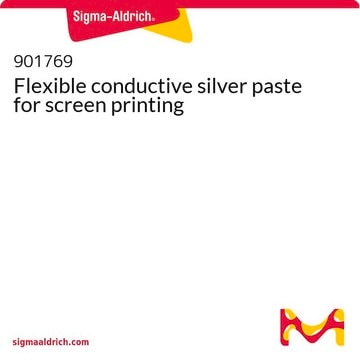200689
Ethyl cellulose
viscosity 10 cP, 5 % in toluene/ethanol 80:20(lit.), extent of labeling: 48% ethoxyl
Synonym(s):
ethylcellulose
Sign Into View Organizational & Contract Pricing
All Photos(3)
About This Item
Recommended Products
form
powder
autoignition temp.
698 °F
extent of labeling
48% ethoxyl
refractive index
n20/D 1.47 (lit.)
viscosity
10 cP, 5 % in toluene/ethanol 80:20(lit.)
transition temp
softening point 155 °C
density
1.14 g/mL at 25 °C (lit.)
Looking for similar products? Visit Product Comparison Guide
General description
Ethyl cellulose(EC) is a hydrophobic andphysiologically inert cellulose derivative. It is widely used to preparephysiological dosage forms. It can also be used as a polymer coating,particle emulsion stabilizer and in pharmaceuticallyuseful aqueous latex dispersions.
Application
Ethyl cellulose can be used as a starting material to prepare zein-based nanofibers for controlled drug release. The addition of EC improves the solubility and mechanical properties of the composite nanofibers.
It can be used to prepare graphene-based ink for inkjet printing. This graphene oxide ink printed onto ITO surfaces can be used as an electrode for label-free DNA sensing.
Owing to its unique features such as gastroresistance, biocompatibility, and degradation to non-toxic and readily excreted products, EC is widely used in oral and topical drug dosage forms for the controlled release of the drug.
It can be used to prepare graphene-based ink for inkjet printing. This graphene oxide ink printed onto ITO surfaces can be used as an electrode for label-free DNA sensing.
Owing to its unique features such as gastroresistance, biocompatibility, and degradation to non-toxic and readily excreted products, EC is widely used in oral and topical drug dosage forms for the controlled release of the drug.
Features and Benefits
- Non-toxic
- Stable
- Compressible
Storage Class Code
11 - Combustible Solids
WGK
WGK 1
Flash Point(F)
Not applicable
Flash Point(C)
Not applicable
Personal Protective Equipment
dust mask type N95 (US), Eyeshields, Gloves
Certificates of Analysis (COA)
Search for Certificates of Analysis (COA) by entering the products Lot/Batch Number. Lot and Batch Numbers can be found on a product’s label following the words ‘Lot’ or ‘Batch’.
Already Own This Product?
Find documentation for the products that you have recently purchased in the Document Library.
Customers Also Viewed
Arif Z Nelson et al.
Proceedings of the National Academy of Sciences of the United States of America, 117(11), 5671-5679 (2020-03-05)
Microfluidic tools and techniques for manipulating fluid droplets have become core to many scientific and technological fields. Despite the plethora of existing approaches to fluidic manipulation, non-Newtonian fluid phenomena are rarely taken advantage of. Here we introduce embedded droplet printing-a
Ghulam Murtaza
Acta poloniae pharmaceutica, 69(1), 11-22 (2012-05-12)
Ethylcellulose (EC) based microencapsulated drug delivery systems are being extensively studied throughout the world for achieving extended drug release and protecting the core substance from degradation. The in vitro evaluation of EC microcapsules have elucidated that their particle characteristics are
Oguzhan Gunduz et al.
Pharmaceutical research, 30(1), 225-237 (2012-09-08)
To investigate a new microfluidic method for the continuous preparation of hollow-shell nanoparticles of a hydrophobic polymer and the simultaneous encapsulation within these of a hydrophilic active pharmaceutical ingredient. A specially designed and constructed microfluidic device which facilitates at a
Tetsuya Ozeki et al.
Biological & pharmaceutical bulletin, 35(11), 1926-1931 (2012-11-06)
Production of drug nanoparticles is an effective strategy to enhance solubility and oral absorption of water-insoluble drugs. The handling of drug nanoparticles has been an important issue in drug formulation because nanoparticles easily aggregate each other and redispersion of these
Kifayat Ullah Shah et al.
TheScientificWorldJournal, 2012, 842348-842348 (2012-06-01)
The design and fabrication of sustained/controlled release dosage forms, employing new excipients capable of extending/controlling the release of drugs from the dosage forms over prolonged periods, has worked well in achieving optimally enhanced therapeutic levels of the drugs. In this
Our team of scientists has experience in all areas of research including Life Science, Material Science, Chemical Synthesis, Chromatography, Analytical and many others.
Contact Technical Service






